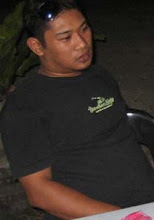


On the sea voyage home in 1832, Morse encountered Charles Thomas Jackson of Boston who was well schooled in electromagnetism. Witnessing various experiments with Jackson's electromagnet, Morse developed the concept of a single wire telegraph, and The Gallery of the Louvre was set aside. The original Morse telegraph, submitted with his patent application, is part of the collections of the National Museum of American History at the Smithsonian Institution. In time the Morse code would become the primary language of telegraphy in the world, and is still the standard for rhythmic transmission of data.
William Cooke and Professor Charles Wheatstone reached the stage of launching a commercial telegraph prior to Morse, despite starting later. In England, Cooke became fascinated by electrical telegraph in 1836, four years after Morse, but with greater financial resources. Cooke abandoned his primary subject of anatomy and built a small electrical telegraph within three weeks. Wheatstone also was experimenting with telegraphy and (most importantly) understood that a single large battery would not carry a telegraphic signal over long distances, and that numerous small batteries were far more successful and efficient in this task (Wheatstone was building on the primary research of Joseph Henry, an American physicist). Cooke and Wheatstone formed a partnership and patented the electrical telegraph in May 1837, and within a short time had provided the Great Western Railway with a 13-mile (21 km) stretch of telegraph. However, Cooke and Wheatstone's multiple wire signaling method would be overtaken by Morse's superior method within a few years.
Morse encountered the problem of getting a telegraphic signal to carry over more than a few hundred yards of wire. His breakthrough came from the insights of Professor Leonard Gale, who taught chemistry at New York University (a personal friend of Joseph Henry). With Gale's help, Morse soon was able to send a message through ten miles (16 km) of wire. This was the great breakthrough Morse had been seeking. Morse and Gale were soon joined by a young enthusiastic man, Alfred Vail, who had excellent skills, insights and money. Morse's telegraph now began to be developed very rapidly.
In 1838 a trip to Washington, D.C. failed to attract federal sponsorship for a telegraph line. Morse then traveled to Europe seeking both sponsorship and patents, but in London discovered Cooke and Wheatstone had already established priority. Morse would need the financial backing of Maine congressman Francis Ornand Jonathan Smith.
Morse made one last trip to Washington, D.C., in December 1842, stringing "wires between two committee rooms in the Capitol, and sent messages back and forth" to demonstrate his telegraph system.³ Congress appropriated $30,000 in 1843 for construction of an experimental 38-mile (61 km) telegraph line between Washington, D.C., and Baltimore, Maryland, along the right-of-way of the Baltimore and Ohio Railroad. An impressive demonstration occurred on May 1, 1844, when news of the Whig Party's nomination of Henry Clay for U.S. President was telegraphed from the party's convention in Baltimore to the Capitol Building in Washington.[5]. On May 24, 1844, the line was officially opened as Morse sent his famous words "What hath God wrought" from the B&O's Baltimore station to the Capitol Building along the wire.In May 1845 the Magnetic Telegraph Company was formed in order to radiate telegraph lines from New York City towards Philadelphia, Boston, Buffalo, New York and the Mississippi.
Morse also at one time adopted Wheatstone and Carl August von Steinheil's idea of broadcasting an electrical telegraph signal through a body of water or down steel railroad tracks or anything conductive. He went to great lengths to win a lawsuit for the right to be called "inventor of the telegraph", and promoted himself as being an inventor, but Alfred Vail played an important role in the invention of the Morse Code, which was based on earlier codes for the electromagnetic telegraph.
Samuel Morse received a patent for the telegraph in 1847, at the old Beylerbeyi Palace (the present Beylerbeyi Palace was built in 1861-1865 on the same location) in Istanbul, which was issued by Sultan Abdülmecid who personally tested the new invention.
In the 1850s, Morse went to Copenhagen and visited the Thorvaldsens Museum, where the sculptor's grave is in the inner courtyard. He was received by King Frederick VII, who decorated him with the Order of the Dannebrog. Morse expressed his wish to donate his portrait from 1830 to the king. The Thorvaldsen portrait today belongs to Margaret II of Denmark.
The Morse telegraphic apparatus was officially adopted as the standard for European telegraphy in 1851. Britain (with its British Empire) remained the only notable part of the world where other forms of electrical telegraph were in widespread use (they continued to use the needle telegraph invention of Cooke and Wheatstone).





No comments:
Post a Comment